Area of a Trapezium
In area of a trapezium we will discuss about the formula and the solved examples in area of a trapezium.
Trapezium:
A trapezium is a quadrilateral having one pair of parallel opposite sides. In the given figure, ABCD is a trapezium in which AB ∥ DC.
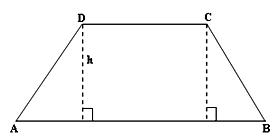
Area of a Trapezium:
Let ABCD be a trapezium in which AB ∥ DC, CE ⊥ AB, DF ⊥ AB and CE = DF = h.
Prove that:
Area of a trapezium ABCD = {¹/₂ × (AB + DC) × h} square units.
Proof: Area of a trapezium ABCD
= area (∆DFA) + area (rectangle DFEC) + area (∆CEB)
= (¹/₂ × AF × DF) + (FE × DF) + (¹/₂ × EB × CE)
= (¹/₂ × AF × h) + (FE × h) + (¹/₂ × EB × h)

= ¹/₂ × h × (AF + 2FE + EB)
= ¹/₂ × h × (AF + FE + EB + FE)
= ¹/₂ × h × (AB + FE)
= ¹/₂ × h × (AB + DC) square units.
= ¹/₂ × (sum of parallel sides) × (distance between them)
Formula of Area of a trapezium = ¹/₂ × (sum of parallel sides) × (distance between them)
Solved Examples of Area of a Trapezium
1. Two parallel sides of a trapezium are of lengths 27 cm and 19 cm respectively, and the distance between them is 14 cm. Find the area of the trapezium.
Solution:
Area of the trapezium
= ¹/₂ × (sum of parallel sides) × (distance between them)
= {¹/₂ × (27 + 19) × 14} cm²
= 322 cm²
2. The area of a trapezium is 352 cm² and the distance between its parallel sides is 16 cm. If one of the parallel sides is of length 25 cm, find the length of the other.
Solution:
Let the length of the required side be x cm.
Then, area of the trapezium = {¹/₂ × (25 + x) × 16} cm²
= (200 + 8x) cm².
But, the area of the trapezium = 352 cm² (given)
Therefore, 200 + 8x = 352
⇒ 8x = (352 - 200)
⇒ 8x = 152
⇒ x = (152/8)
⇒ x = 19.
Hence, the length of the other side is 19 cm.
3. The parallel sides of a trapezium are 25 cm and 13 cm; its nonparallel sides are equal, each being 10 cm. Find the area of the trapezium.
Solution:
Let ABCD be the given trapezium in which AB = 25 cm, DC = 13 cm, BC = 10 cm and AD = 10 cm.
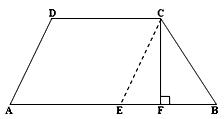
Through C, draw CE ∥ AD, meeting AB at E.
Also, draw CF ⊥ AB.
Now, EB = (AB - AE) = (AB - DC)
= (25 - 13) cm = 12 cm;
CE = AD = 10 cm; AE = DC = 13 cm.
Now, in ∆EBC, we have CE = BC = 10 cm.
So, it is an isosceles triangle.
Also, CF ⊥ AB
So, F is the midpoint of EB.
Therefore, EF = ¹/₂ × EB = 6cm.
Thus, in right-angled ∆CFE, we have CE = 10 cm, EF = 6 cm.
By Pythagoras’ theorem, we have
CF = [√CE² - EF²]
= √(10² - 6²)
= √64
= √(8 × 8)
= 8 cm.
Thus, the distance between the parallel sides is 8 cm.
Area of trapezium ABCD = ¹/₂ × (sum of parallel sides) × (distance between them)
= {¹/₂ × (25 + 13) × 8 cm²
= 152 cm²
4. ABCD is a trapezium in which AB ∥ DC, AB = 78 cm, CD = 52 cm, AD = 28 cm and BC = 30 cm. Find the area of the trapezium.
Solution:
Draw CE ∥ AD and CF ⊥ AB.
Now, EB = (AB - AE) = (AB - DC) = (78 - 52) cm = 26 cm,
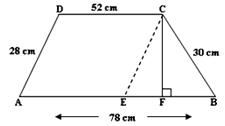
CE = AD = 28 cm and BC = 30 cm.
Now, in ∆CEB, we have
S = ¹/₂ (28 + 26 + 30) cm = 42 cm.
(s - a) = (42 - 28) cm = 14 cm,
(s - b) = (42 - 26) cm = 16 cm, and
(s - c) = (42 - 30) cm = 12 cm.
area of ∆CEB = √{s(s - a)(s - b)(s - c)}
= √(42 × 14 × 16 × 12) cm²
= 336 cm²
Also, area of ∆CEB = ¹/₂ × EB × CF
= (¹/₂ × 26 × CF) cm²
= (13 × CF) cm²
Therefore, 13 × CF = 336
⇒ CF = 336/13 cm
Area of a trapezium ABCD
= {¹/₂ × (AB + CD) × CF} square units
= {¹/₂ × (78 + 52) × ³³⁶/₁₃} cm²
= 1680 cm²
● Area of a Trapezium
● Area of a Trapezium - Worksheet
Worksheet on Area of a Polygon
8th Grade Math Practice
From Area of a Trapezium to HOME PAGE
Didn't find what you were looking for? Or want to know more information about Math Only Math. Use this Google Search to find what you need.
Recent Articles
-
Expanded Form of a Number | Writing Numbers in Expanded Form | Values
Apr 27, 25 10:13 AM
We know that the number written as sum of the place-values of its digits is called the expanded form of a number. In expanded form of a number, the number is shown according to the place values of its… -
Converting Fractions to Decimals | Solved Examples | Free Worksheet
Apr 26, 25 05:04 PM
In converting fractions to decimals, we know that decimals are fractions with denominators 10, 100, 1000 etc. In order to convert other fractions into decimals, we follow the following steps: -
Converting Decimals to Fractions | Solved Examples | Free Worksheet
Apr 26, 25 04:56 PM
In converting decimals to fractions, we know that a decimal can always be converted into a fraction by using the following steps: Step I: Obtain the decimal. Step II: Remove the decimal points from th… -
Worksheet on Decimal Numbers | Decimals Number Concepts | Answers
Apr 26, 25 03:48 PM
Practice different types of math questions given in the worksheet on decimal numbers, these math problems will help the students to review decimals number concepts. -
Multiplication Table of 4 |Read and Write the Table of 4|4 Times Table
Apr 26, 25 01:00 PM
Repeated addition by 4’s means the multiplication table of 4. (i) When 5 candle-stands having four candles each. By repeated addition we can show 4 + 4 + 4 + 4 + 4 = 20 Then, four 5 times


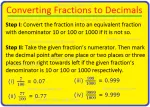
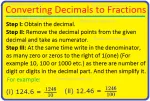
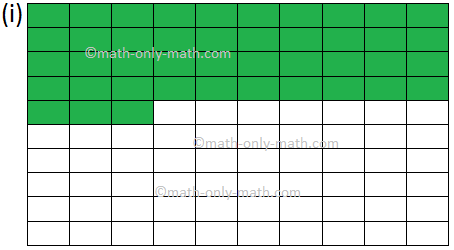
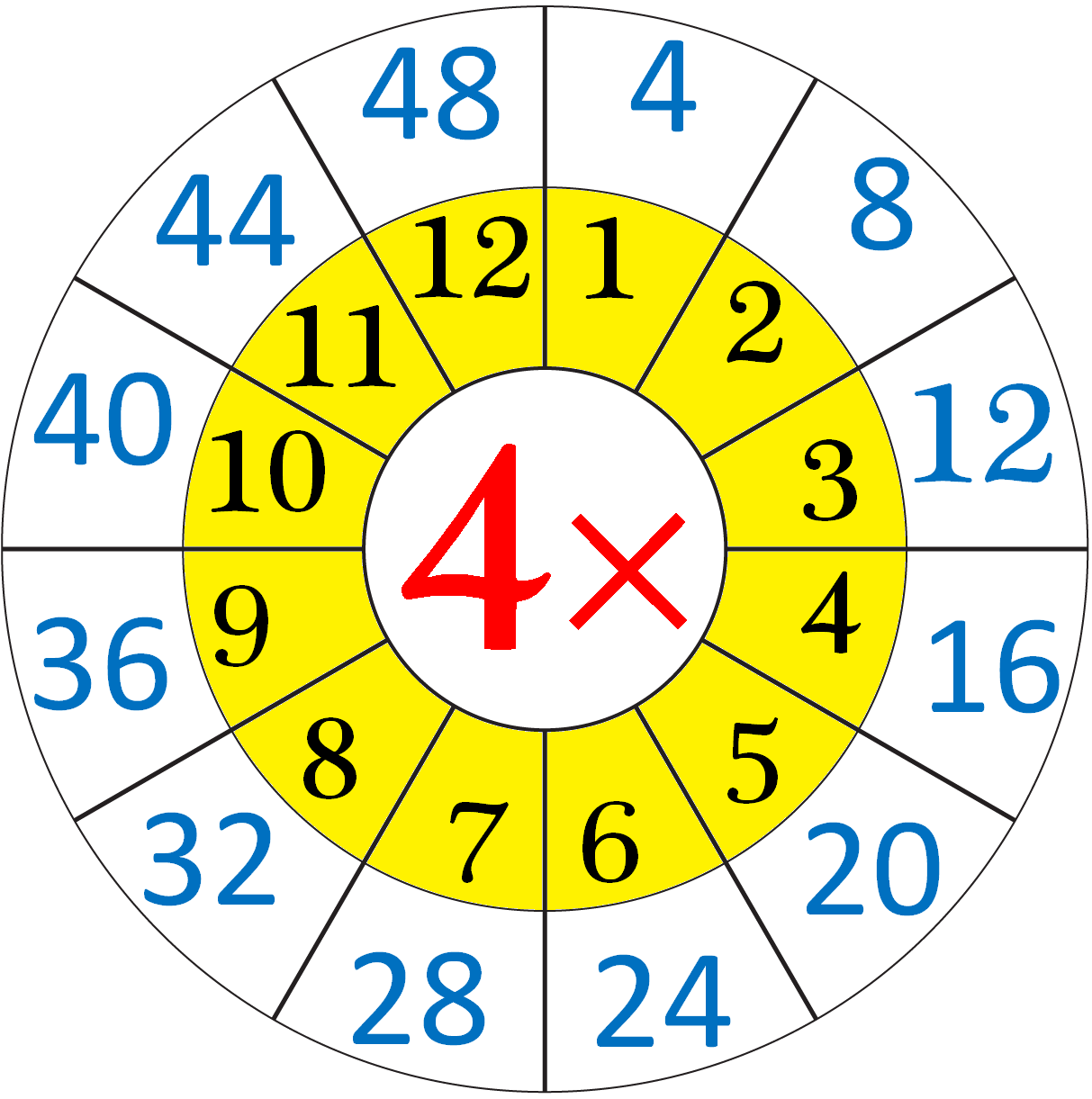
New! Comments
Have your say about what you just read! Leave me a comment in the box below. Ask a Question or Answer a Question.